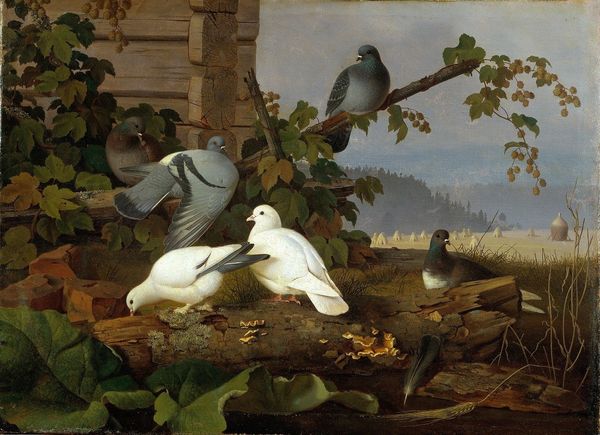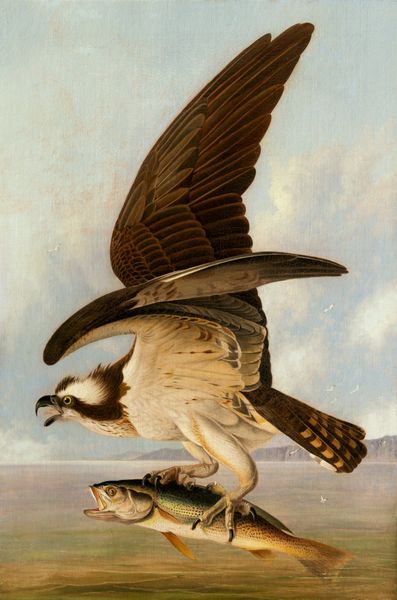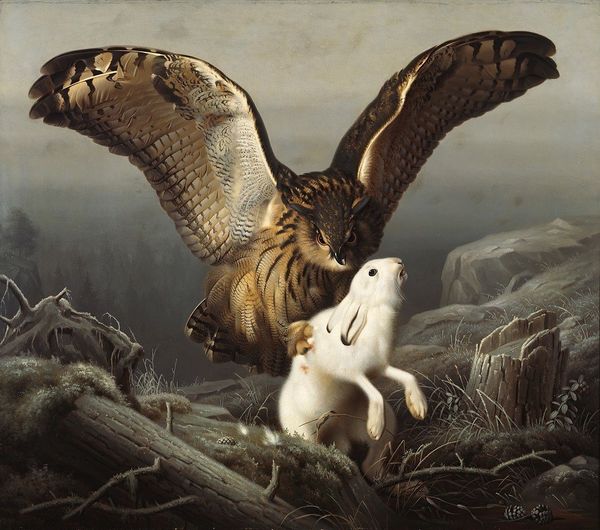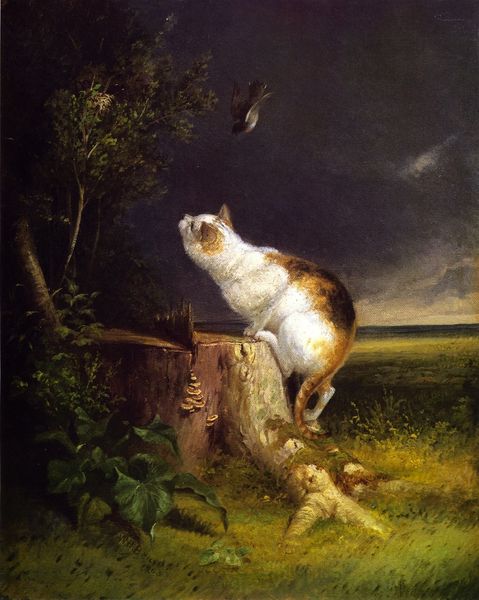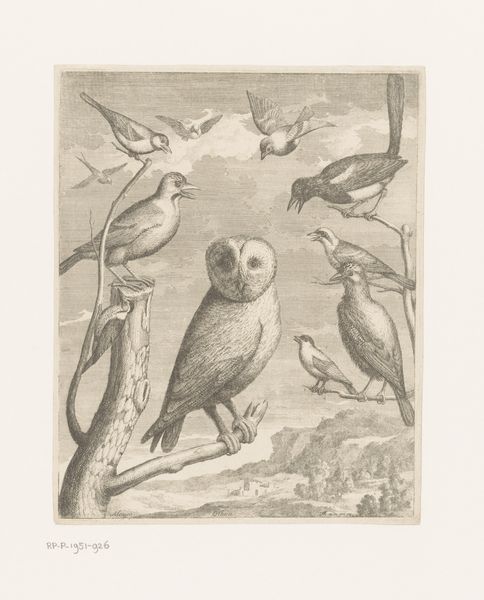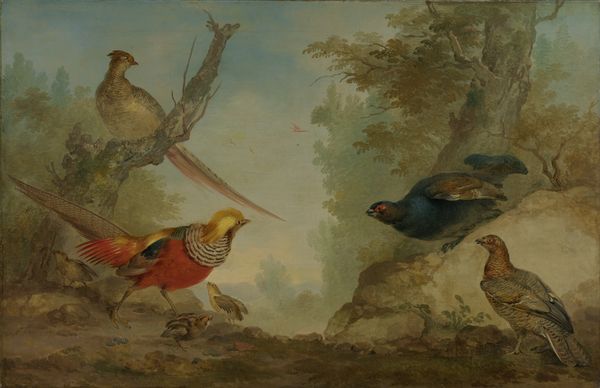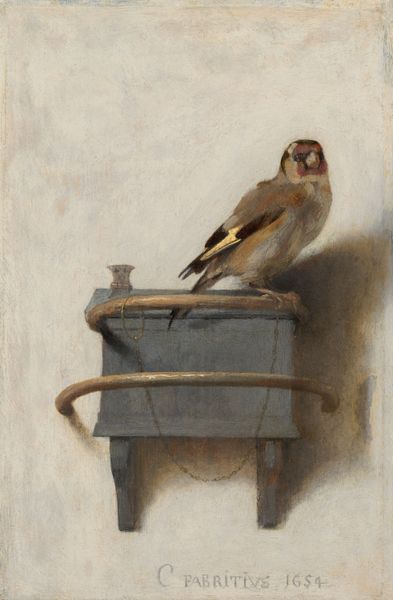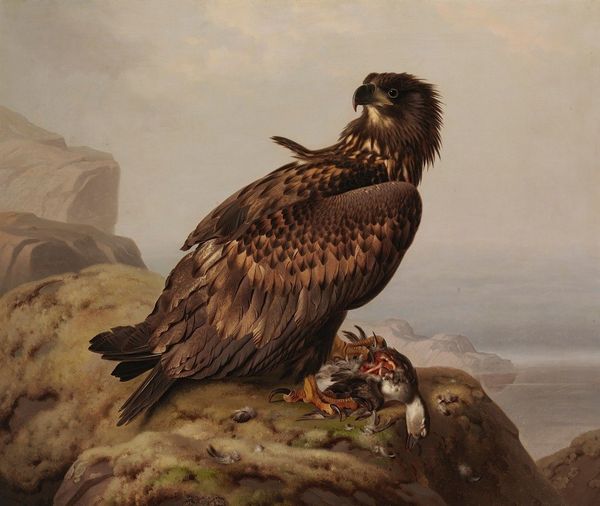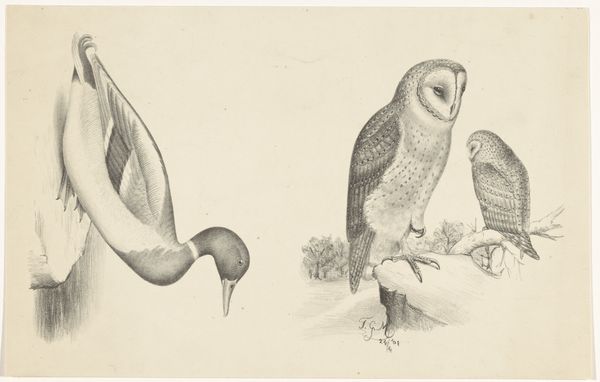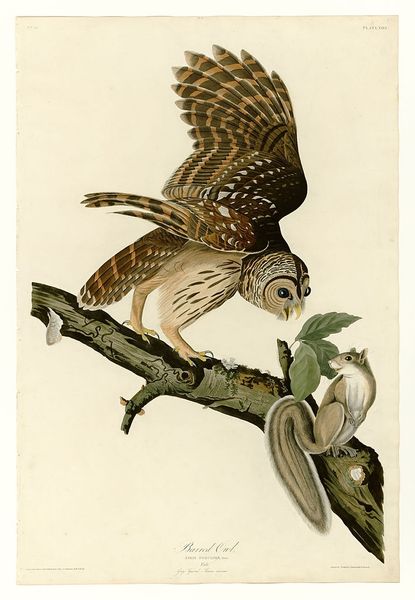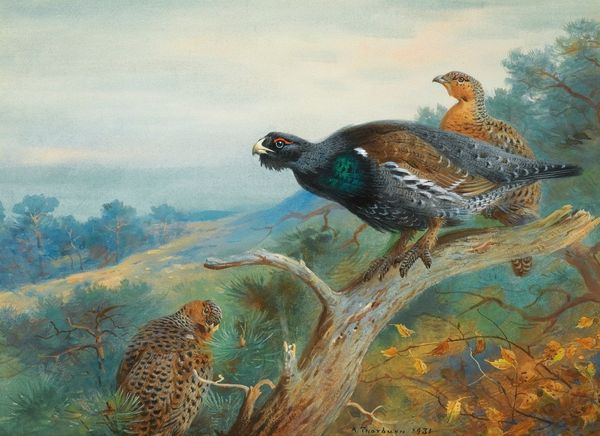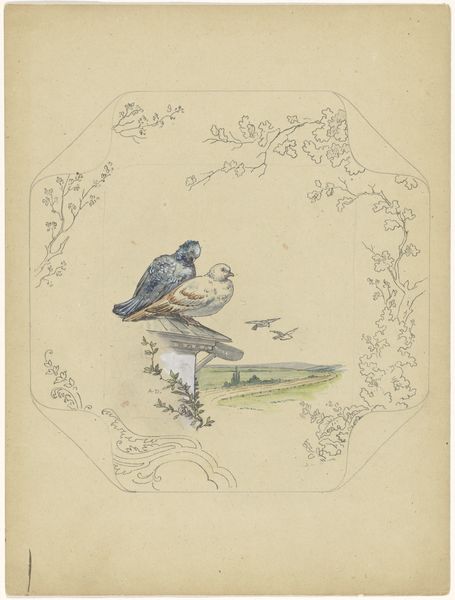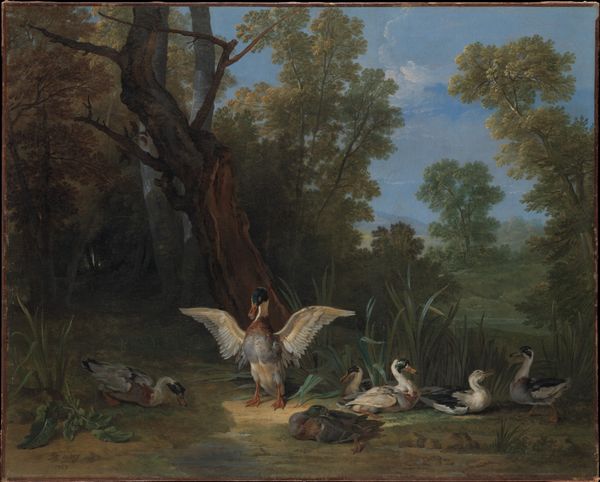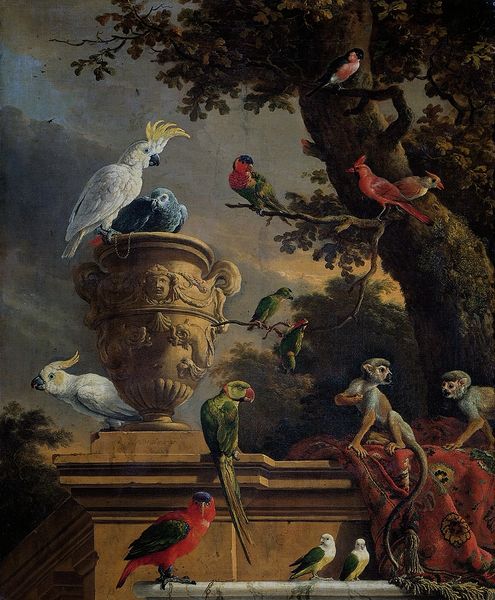
Copyright: Public Domain: Artvee
Editor: This is "Greenland Falcon," an oil painting from 1780 by George Stubbs. I'm immediately struck by the contrast between the bird's stark white plumage and the dark, brooding background. What do you make of the setting and how it interacts with the falcon itself? Curator: The setting is fascinating. While presented as a seemingly natural landscape, we need to consider Stubbs's historical context. The 18th century witnessed growing British colonial interests, including explorations into the Arctic. Birds like the Greenland Falcon weren't just animals; they became trophies, emblems of power and dominion over newly 'discovered' territories. Editor: So, the falcon is a symbol of colonial power? Curator: It’s more complex than just simple symbolism. Consider who commissioned such a portrait. Was it a landed aristocrat displaying his wealth and status? Perhaps a member of the Royal Society, eager to catalog the natural world? The patron's intention significantly shapes the painting's public role. Also, Stubbs himself played a crucial role, aestheticizing natural power and beauty through his masterful oil technique and unique, objective artistic viewpoint. Do you see other clues as to its meaning? Editor: The bird is perched on what appears to be a training stand used in falconry… Was falconry a widespread hobby among aristocrats back then? Curator: Exactly. Falconry itself was a marker of social standing and aristocratic leisure. But, beyond that, reflect on what the idea of containing the animal means when transferred to the context of Empire. What could containing a wild animal have meant to British aristocracy, and British national identity? Editor: It all points to how art isn’t made in a vacuum. The social status and political aims really contextualize a painting like this. Curator: Precisely! Understanding these layers provides a much richer understanding. Editor: Thanks, I hadn't considered the colonial implications before! This perspective completely changes my initial reading of the piece.
Comments
No comments
Be the first to comment and join the conversation on the ultimate creative platform.
